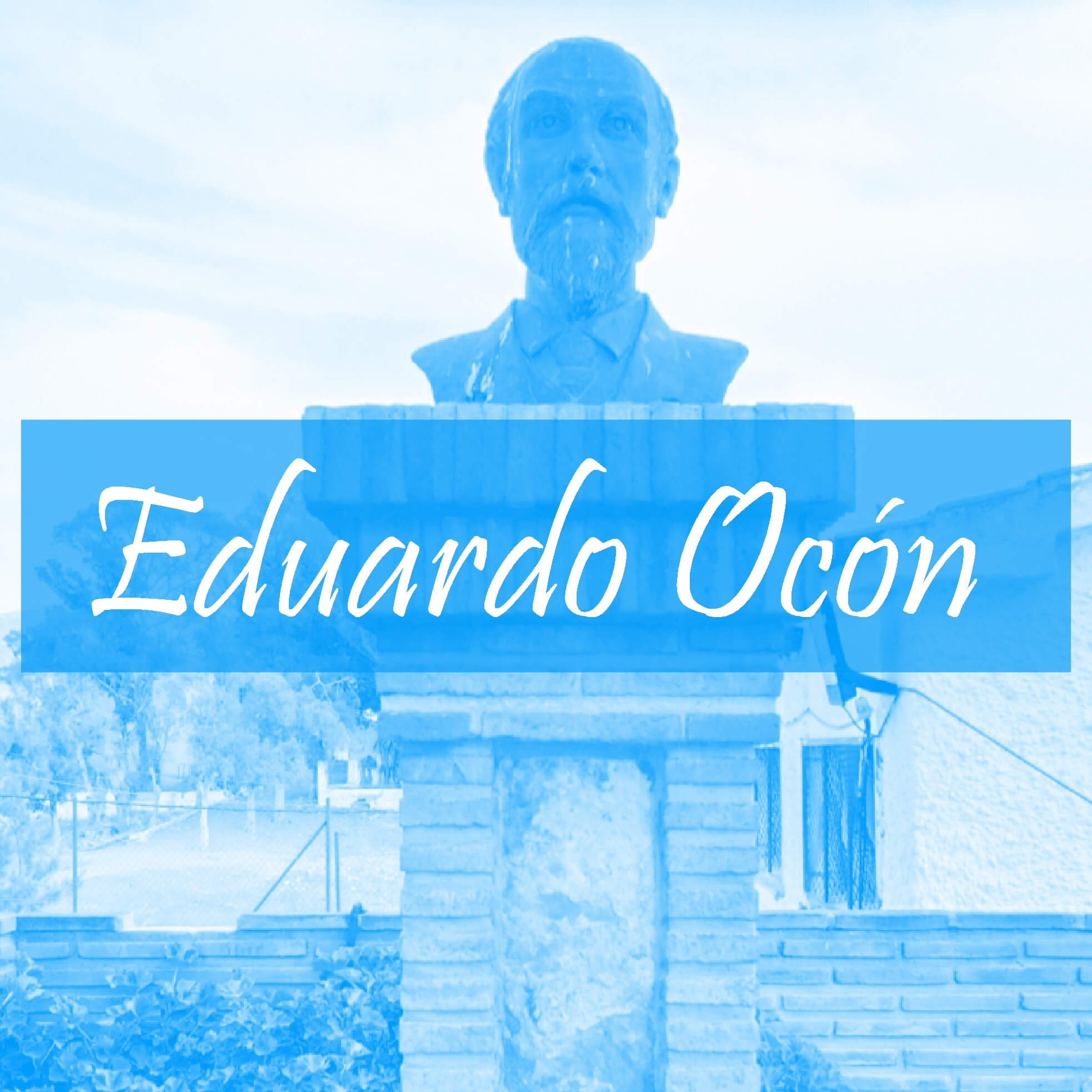Eduardo Ocón y Rivas (1833-1901), great composer and pianist from Malaga, specifically Benamocarra. Coming from a humble family, he began his musical career in the Cathedral of Malaga, with great interest and motivation for music he created a music school, to finally become the first director of the Malaga Conservatory and thus become one of the most important Spanish composers of the 19th century.
What are the origins of Eduardo Ocón?
He was born in Calle Pilar on January 12, 1833 in Benamocarra, a village in the Axarquía region of Malaga. He comes from a humble family, his father Francisco Ocón López was a locksmith, and his mother María de los Dolores Rivas Román took care of the five siblings, Eduardo was the third brother. The painter from the Malaga school Emilio Ocón y Rivas is his brother.
When did his interest in music begin?
From a very young age he was interested in music, at the age of only seven he began his career in the Cathedral of Malaga with the choirmaster Mariano Reig as a teacher who instructs him in music theory, fugue, counterpoint, and composition, and finally piano thanks to the organist Jose Joaquin Murguia. In 1848 he was appointed choir minister and two years later at the age of seventeen he was already giving classes when the teacher was absent. At the age of 21, in 1854, he obtained the position of second organist of the Cathedral of Malaga through opposition exams.
At what point does Eduardo take a turn in his professional musical career?
In 1967, at the age of 34, he began to travel around Europe, perhaps because Malaga limited him to developing his musical skills and completing his training. During his travels he meets great composers such as the Belgian François-Joseph Fétis, the French Ambroise Thomas and Charles François Gounod. During his stay in France, he obtained a position as a singing teacher in the communal schools of the French capital through competitive examination.
The return to Malaga
In the year 1870 he returned to Malaga to once again occupy the position of second organist in the cathedral for a fairly low salary, for which reason he resigned from this position shortly after. In 1869 the Philharmonic Society had been created where he assumed the direction and promoted the creation of a music school where he taught violin and solfeggio classes in 1871, finally ten years later in 1880 this ambition got him to be the first director of the Royal Conservatory “María Cristina” of Malaga, in honor of the Queen. The conservatory was located in the old Franciscan convent of San Luis el Real until 2009.
He will meet the Bochardt Odendahl, a German family, in Malaga. At this time he meets the daughter of the family named Josefa Zela Willermine, a notable pianist, with whom he would end up marrying, with whom he will have three children: Ida, Eduardo and Cecilio.
What are the outstanding works for which Eduardo Ocón is known?
– Motet to the Blessed Sacrament (1854)
– Motet in Honor of the Immaculate Conception of Mary (1856)
– Quam Pulchri Sunt (1856)
– Cantata, composed in 1857 on the occasion of the birth of Alfonso XIII and
– La zarzuela: The Spanish cry, in collaboration with the playwright Ramón Franquelo
– The Miserere, is a religious work
– The Andalusian Rhapsody
– Bolero Memories of Andalusia Op. 8 (1868)
His last moments and posthumous tributes
Eduardo, at the age of 68, suffered from flu-like pneumonia from which he died on February 28, 1901. Eduardo Ocón has undoubtedly left his mark in Malaga and in his honor an auditorium was built in 1960 that bears his name in the park next to Parque del Paseo. Near this enclosure, a bust on a pedestal with the image of Eduardo, whose author is Domingo Muguerza, was erected in 1961. Both in the Huelín neighborhood of Málaga and in his hometown of Benamocarra there is an educational center that bears his name. Finally, in Benamocarra, the day of music is celebrated in September in honor of the composer from Malaga.
For more information on Pueblo de Benamocarra: visit our page on Benamocarra
